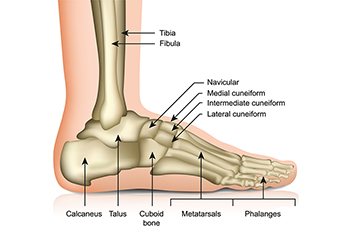
There are several factors that can be taken into account while choosing the right running shoe. It is helpful to plan ahead, which can include deciding on what surface will be trained on, in addition to how the shoes will feel. Many people enjoy walking before beginning a running routine, and this can be useful in observing the gait. It is beneficial for individuals to learn how the joints in the feet are aligned, which may help to determine what type of running shoe will be purchased. It is important to find shoes that fit correctly, ensuring there is adequate room between the end of the toes and the tip of the shoes. Running shoes last approximately 300 miles, or three to four months for people who regularly run, and it is beneficial that they are promptly replaced for maximum foot protection. There are several types of shoes to choose from, and if you are interested in pursuing running as a hobby, it is suggested that you confer with a podiatrist. This type of doctor can guide you toward purchasing the shoes that are best for you and your style of running.
You should always make sure your running shoes fit properly in order to avoid injury. For more information, contact one of our podiatrists from Advanced Foot & Ankle Medical Center . Our doctors can provide the care you need to keep you pain-free and on your feet.
Choosing the Right Running Shoe for Your Foot Type
Improper shoe sizing can cause a myriad of problems for your feet. Shoes that don’t fit you properly can lead to muscular imbalances in your body, which can result in foot, knee, and hip injuries.
Tips for Finding the Right Running Shoe
- Make sure you have a thumb’s width of wiggle room between the end of your longest toe and the front of the shoe.
- There should be little to no slipping at the heel
- Don’t assume your size in one shoe brand will be your size in another
- Do not lace up your shoes too tightly
- Walk around in the store with your new shoes before you buy them
If you have any questions please feel free to contact our our office located in Thousand Oaks, CA . We offer the newest diagnostic and treatment technologies for all your foot and ankle needs.









